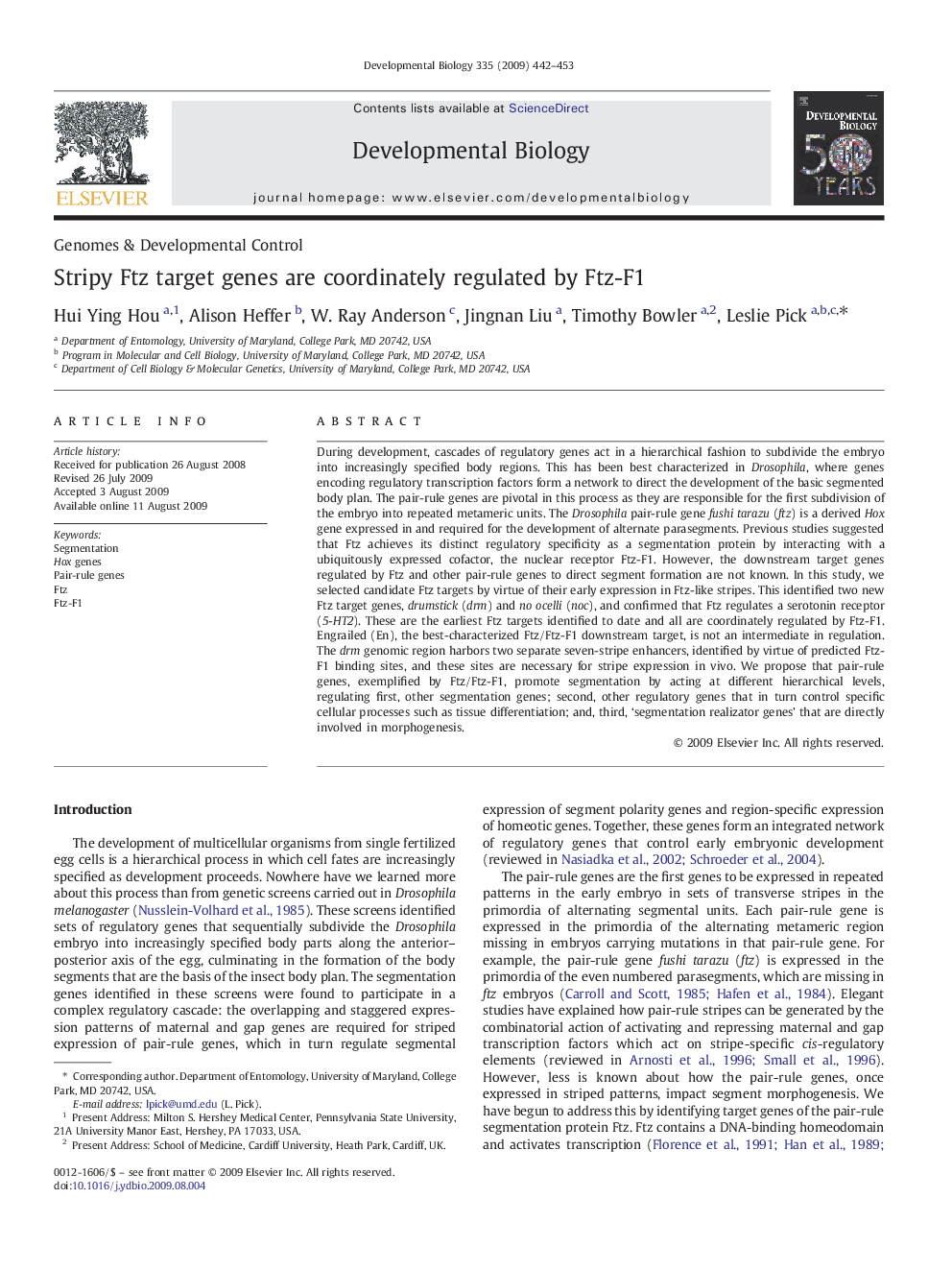| کد مقاله | کد نشریه | سال انتشار | مقاله انگلیسی | نسخه تمام متن |
|---|---|---|---|---|
| 10933170 | 1093772 | 2009 | 12 صفحه PDF | دانلود رایگان |
عنوان انگلیسی مقاله ISI
Stripy Ftz target genes are coordinately regulated by Ftz-F1
دانلود مقاله + سفارش ترجمه
دانلود مقاله ISI انگلیسی
رایگان برای ایرانیان
کلمات کلیدی
موضوعات مرتبط
علوم زیستی و بیوفناوری
بیوشیمی، ژنتیک و زیست شناسی مولکولی
بیولوژی سلول
پیش نمایش صفحه اول مقاله

چکیده انگلیسی
During development, cascades of regulatory genes act in a hierarchical fashion to subdivide the embryo into increasingly specified body regions. This has been best characterized in Drosophila, where genes encoding regulatory transcription factors form a network to direct the development of the basic segmented body plan. The pair-rule genes are pivotal in this process as they are responsible for the first subdivision of the embryo into repeated metameric units. The Drosophila pair-rule gene fushi tarazu (ftz) is a derived Hox gene expressed in and required for the development of alternate parasegments. Previous studies suggested that Ftz achieves its distinct regulatory specificity as a segmentation protein by interacting with a ubiquitously expressed cofactor, the nuclear receptor Ftz-F1. However, the downstream target genes regulated by Ftz and other pair-rule genes to direct segment formation are not known. In this study, we selected candidate Ftz targets by virtue of their early expression in Ftz-like stripes. This identified two new Ftz target genes, drumstick (drm) and no ocelli (noc), and confirmed that Ftz regulates a serotonin receptor (5-HT2). These are the earliest Ftz targets identified to date and all are coordinately regulated by Ftz-F1. Engrailed (En), the best-characterized Ftz/Ftz-F1 downstream target, is not an intermediate in regulation. The drm genomic region harbors two separate seven-stripe enhancers, identified by virtue of predicted Ftz-F1 binding sites, and these sites are necessary for stripe expression in vivo. We propose that pair-rule genes, exemplified by Ftz/Ftz-F1, promote segmentation by acting at different hierarchical levels, regulating first, other segmentation genes; second, other regulatory genes that in turn control specific cellular processes such as tissue differentiation; and, third, 'segmentation realizator genes' that are directly involved in morphogenesis.
ناشر
Database: Elsevier - ScienceDirect (ساینس دایرکت)
Journal: Developmental Biology - Volume 335, Issue 2, 15 November 2009, Pages 442-453
Journal: Developmental Biology - Volume 335, Issue 2, 15 November 2009, Pages 442-453
نویسندگان
Hui Ying Hou, Alison Heffer, W. Ray Anderson, Jingnan Liu, Timothy Bowler, Leslie Pick,